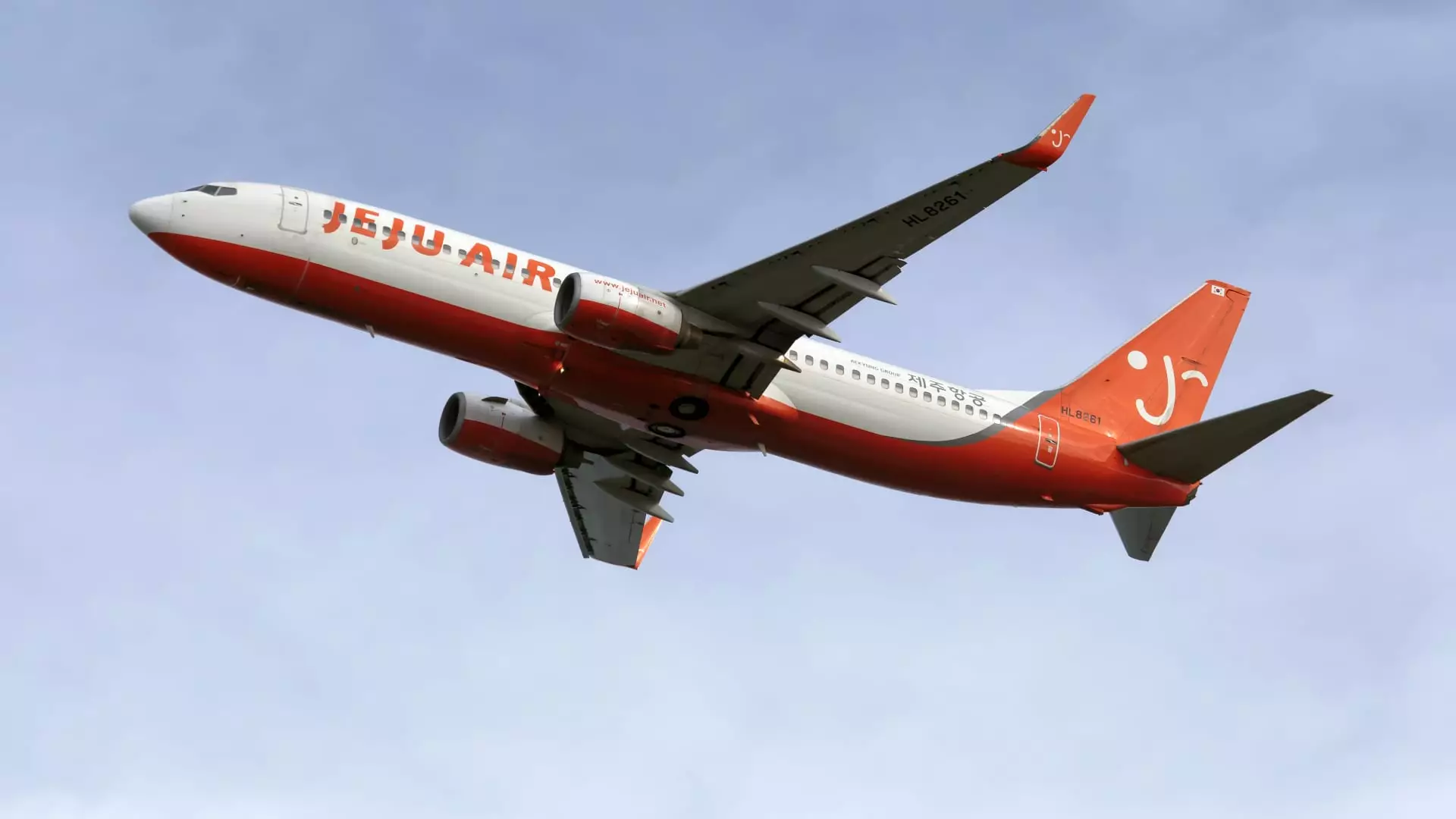On a fateful day at Muan International Airport, tragedy struck when Jeju Air Flight 7C2216 executed an unexpected belly landing, resulting in a catastrophic inferno that claimed the lives of 179 out of the 181 individuals onboard. This incident marks a grim milestone in South Korea’s aviation history, being one of the most severe air disasters the nation has faced in decades. The horrific scene raised an abundance of questions and prompted South Korea’s acting president, Choi Sang-mok, to initiate an immediate inspection of the Boeing 737-800, the very aircraft model involved in this disaster.
The Boeing 737-800 is celebrated for its reliability, being a staple in commercial aviation for many years. With more than 4,400 of these aircraft operational globally, it constitutes approximately 17% of the world’s commercial airliner fleet. However, the catastrophic incident has ignited concerns about its operational safety, especially given the previous controversies surrounding Boeing’s newer models, such as the 737 Max.
The aircraft in question was a 15-year-old Boeing 737-800, having previously been operated by European low-cost carrier Ryanair before being taken over by Jeju Air in 2017. Despite its extensive service history, which includes flying well over millions of passengers without incident, the tragic landing raised significant red flags. Aerospace experts, however, express skepticism regarding the likelihood of uncovering any fundamental design flaws in this longstanding aircraft model. Richard Aboulafia, a notable figure in aerospace consulting, highlighted that a discovery of considerable design issues at this stage is highly improbable.
One of the critical aspects under investigation is the deployment of the landing gear. Although there are established protocols for pilots to manually engage the landing gear in case of hydraulic failure, investigators are left puzzled as to why this procedure was not executed. This inquiry raises questions about the crew’s decision-making processes and whether they encountered immediate technical challenges that precluded adherence to standard operation procedures.
As the investigation unfolds, multiple theories have emerged to suggest potential causes of the tragic incident. Some speculate that a bird strike may have incapacitated the engines, leaving the pilots bewildered and unable to follow emergency protocols. Such a strike at cruising altitude can heavily tax an aircraft’s systems and significantly reduce the window for emergency responses. Jeffrey Guzzetti, a retired air safety investigator, mentioned that had the landing not resulted in a collision with a hard structure at the end of the runway, the fatality toll could have been significantly lower, hinting at the role of external factors in the severity of the disaster.
The role of human factors, such as the crew’s situational awareness and decision-making in an impending crisis, is another focal point as investigators dig deeper. In aviation safety, the interplay between technology, pilot training, and situational factors can greatly influence outcomes.
This tragedy has reignited discussions on aviation safety regulations and the systemic checks in place for aircraft operations. While international cooperation, led by the U.S. National Transportation Safety Board (NTSB) along with teams from Boeing and the FAA, is critical, the complexities surrounding investigations into air crashes mean that answers may not come swiftly. The overall oversight, dictated by the jurisdiction where the incident occurred, puts the onus on South Korea to oversee the investigation while benefiting from the resources and expertise of foreign entities.
As the aviation industry further scrutinizes the events surrounding Jeju Air Flight 7C2216, the collective hope is that the investigation will lead to findings that enhance passenger safety and prevent future tragedies. This incident encapsulates the fragility of flight safety and the need for continuous vigilance, innovation, and improvement in aviation technology and practices—a vital discourse that must persist in the wake of such harrowing events.

